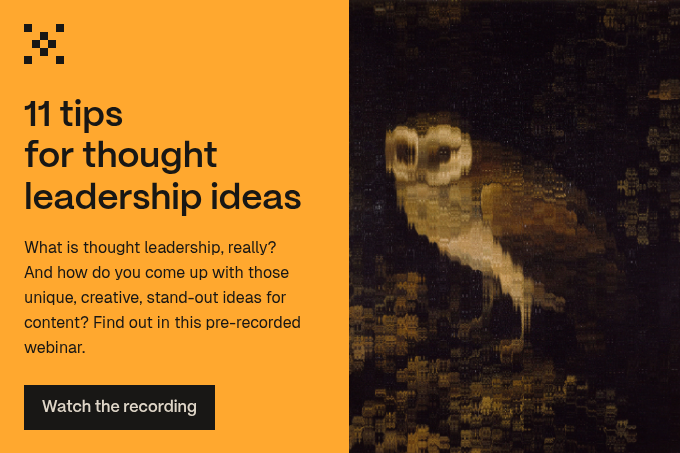We've said it before and we're going to say it again: features don't sell, benefits do.
Your product might have the fastest gigahoozit, or your service might rank number one in the Totally Amazing awards, but none of that means a thing to your potential customers.
Customers don't care what you have or what you've done. Like everyone else, they're only really interested in stories - most often their own. As such, you should be learn how to write the right narratives.
Stories sell
Keith Queensbury of Johns Hopkins conducted an analysis of 108 Super Bowl adverts. He found that, 'regardless of the content of the ad, the structure of that content predicted its success.' In other words, telling a story was better than listing features (or anything else for that matter).
The more complete the story being told in the ad, the more successful the ad. In fact, the more of the five elements of the traditional dramatic structure, shown in Freytag's pyramid, that were included, the better the ad did.
This five-act storytelling structure dates back to Aristotle and is exemplified in Shakespeare's plays. It might not be new, but it remains as effective as ever.
So, well-told stories sell, but why? As Harrison Monarch argues in the HBR, 'A story can go where quantitative analysis is denied admission: our hearts. Data can persuade people, but it doesn’t inspire them to act.'
Storytelling's secret
Human beings are natural storytellers.
We instinctively build a narrative: whether it's of our lives, what's happening outside our window or even the dramatic encounters of geometric shapes on a screen. As Frank Rose explains:
Just as the brain detects patterns in the visual forms of nature — a face, a figure, a flower — and in sound, so too it detects patterns in information. Stories are recognizable patterns, and in those patterns we find meaning.
Not only do stories help us link points of information together and create cause and effect explanations of the world around us, they also trigger something important in our experience.
'The brain, it seems, does not make much of a distinction between reading about an experience and encountering it in real life; in each case, the same neurological regions are stimulated,' says Annie Murphy Paul. When someone describes kicking a ball, our motor cortex lights up. When someone describes a singer as having a 'velvety voice' our sensory cortex lights up. And so on.
So when we listen to a bunch of bullet points, we hear a load of language. When we listen to a story, we live it.
Selling your selling points with stories
So a story lights up our brain and inspires us to action. How does that link to sales? Well there's a little more to the story...as it were.
Research at Princeton, led by Uri Hasson, has found that the brains of a person telling a story and a person listening to that story can synchronise:
When the woman spoke English, the volunteers understood her story, and their brains synchronized. When she had activity in her insula, an emotional brain region, the listeners did too. When her frontal cortex lit up, so did theirs. By simply telling a story, the woman could plant ideas, thoughts and emotions into the listeners’ brains.
Alongside this ability to influence is that fact that people automatically link stories to their own experiences in order to make them more relatable.
This means you can build your selling points into a story that tells the tale of a frustration or problem that the listener can associate with their own experience. You can then 'plant' your business as the happy resolution to that story. Once you've planted that idea, the listener will continue with the narrative of their own experience and 'come up' with the idea of using your product or service to solve their issue.
Even better, if you tell your story with positive sensory descriptions then your selling points will elicit those positive experiences for your listener too.
So rather than:
- My widget speeds up data processing by 20 percent
You say,
I was struggling for time, constantly running and feeling the pressure of clients demanding data I simply didn't have ready. So I decided to do something about it. I developed this widget, which processes the data 20 percent faster, and all of a sudden I had time to breath and my clients were praising me rather than hounding me.
You need more than a good yarn
What makes a good story, great though? Is just telling a story enough? Why do some stories catch our collective attention while others make us shrug with indifference?
'Good stories are strange...Good stories are startling...The narrative excitement of the great scientific theories, far from residing in their reassuring simplicity, lies in their similarly radical exclusions, their shocks,' argues Adam Gopnik of the New Yorker.
Take the image at the top of this article: it immediately makes you want to know the story behind it. It contains familiar elements, but rearranged in a startling way. It makes the idea of being held captive by a story tangible and of course, the outcome isn't obvious.
And as the Super Bowl ads and Shakespeare prove, you also need your five acts, (as shown above). Don't ruin the story by skipping directly to the happy ending: good stories require controlled suspense. That's what keeps us engaged.
Personas make it personal
Personas have come up quite a lot on Bad Language lately and with good reason. They're really important for figuring out not just who your audience is, but what exactly it is they want to hear.
When you pitch your product you have to make it seem as though you are weaving it into every reader's personal story. Trying to appeal to everyone with a general story, however, will resonate with no one. Personas let you be specific to an audience: general to a particular group as it were.
Personas help you hone in on the problems your typical customers face and common objections they throw up. They also tell you a little about their likes and dislikes, lifestyles and personalities. This gives you a clue as to how to shock and startle and what tensions will resonate best with the people most likely to buy from you.
A final word of caution
Storytelling is eternally effective; but how we tell stories changes.
Research suggests that overused phrases, even if they contain an action or feeling, don't light up any part of the brain other than the language processor. They use the example of having 'a rough day', however there are plenty of other clichés and stock metaphors out there that you should avoid.
Keep your storytelling fresh: and as you tell the tale of your selling points make your audience feel as though they are biting into a juicy, tart raspberry rather than munching on some stale, flat pancakes.






